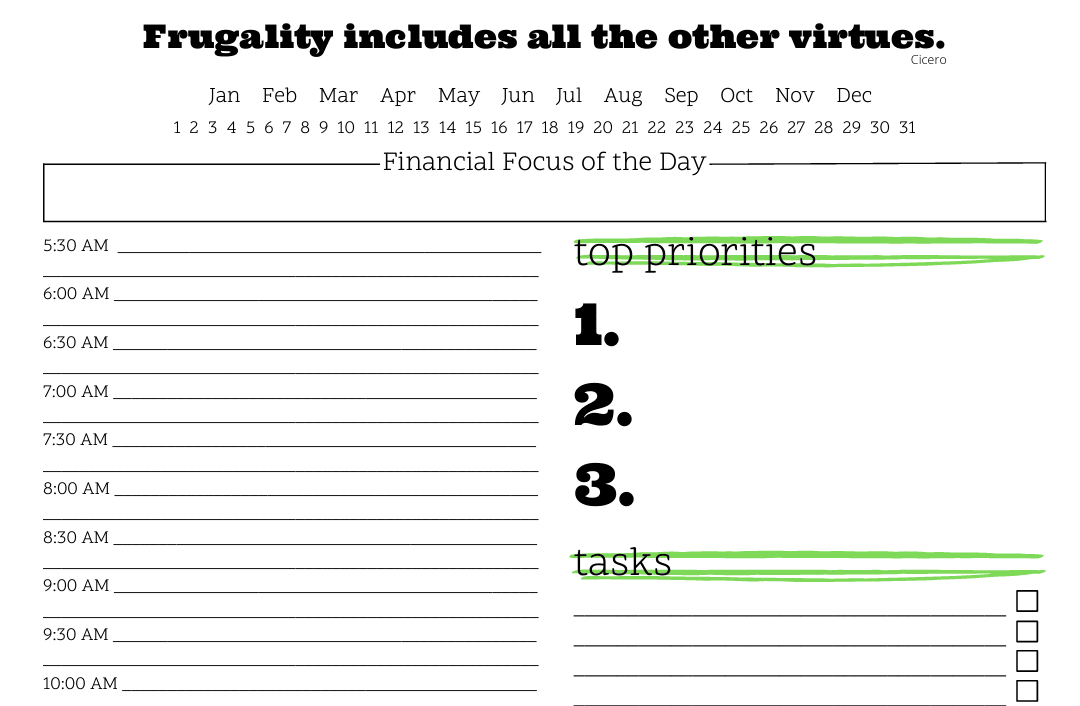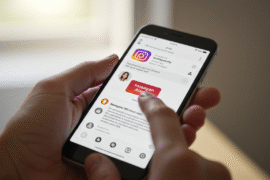This article may contain references to products or services from one or more of our advertisers or partners. We may receive compensation when you click on links to those products or services. Nonetheless, our opinions are our own.
The information presented in this article is accurate to the best of our knowledge at the time of publication. However, information is subject to change, and no guarantees are made about the continued accuracy or completeness of this content after its publication date.
These are the 10 best multichannel contact center software solutions you should consider:
- Harmonix AI
- Zendesk
- Genesys Cloud CX
- Freshdesk Contact Center
- HubSpot Service Hub
- Talkdesk
- RingCentral Contact Center
- Aircall
- 3CX
- Intercom
Handling customer conversations across phone, email, chat, WhatsApp, LinkedIn and social DMs doesn’t have to feel like spinning plates.
The new generation of omnichannel contact center software pulls every touchpoint into one clean timeline, augments agents with practical AI, and keeps your CRM as the single source of truth.
This reworked guide walks you through the top options in 2025, with Harmonix AI taking point for teams that want omnichannel and automation without ripping out their existing CRM.
The Top 10 Omnichannel Contact Center Platforms
1. Harmonix AI
Harmonix AI is an advanced omnichannel layer that integrates directly into your existing CRM, whether you use Salesforce, Microsoft Dynamics, or SAP. Unlike most contact center software, Harmonix doesn’t replace your CRM; it enhances it.
All customer interactions, from calls and emails to WhatsApp and LinkedIn messages, appear in one interface. Agents can respond, log activities, and even trigger automations without switching platforms. Every touchpoint is automatically recorded and attached to the right record inside the CRM, keeping your data clean and accessible.
Key Strengths:
- Works as an extension of your CRM, avoiding integration headaches.
- Unifies every channel into a single, easy-to-use workspace.
- Automatically creates call logs, emails, and summaries for each contact.
- Suggests follow-ups, next steps, and responses using AI.
- Supports voice, WhatsApp, and email agents that automate repetitive workflows.
- Offers contextual analytics for both service and sales performance.
Ideal For: Companies that already use a CRM but want to modernize their communication stack with true omnichannel visibility, faster workflows, and built-in AI intelligence, without replacing what already works.
2. Zendesk
Zendesk is one of the most established platforms in customer experience management. Initially known for email-based ticketing, it has evolved into a robust multichannel hub that handles live chat, calls, social media, and email all in one place.
Its design prioritizes ease of use for agents and supervisors, while offering deep customization and workflow automation through its extensive app marketplace.
Key Strengths:
- Mature ticketing and workflow automation tools.
- Centralized communication across channels like chat, voice, and social media.
- Extensive third-party integration ecosystem.
- Built-in reporting for SLA tracking, CSAT, and agent performance.
Ideal For: Support teams managing large volumes of tickets who need a scalable, proven, and customizable environment with strong analytics and a large support community.
3. Genesys Cloud CX
Genesys Cloud CX is the heavyweight solution for enterprises that need complete control over complex customer interactions. It combines cloud telephony, AI routing, workforce engagement management, and omnichannel communication under a single, scalable system.
Its advanced call distribution, analytics, and real-time dashboards make it one of the most sophisticated contact center tools available.
Key Strengths:
- AI-powered routing and skill-based assignment for calls and chats.
- True omnichannel support: voice, email, SMS, chat, and social.
- Enterprise-grade analytics and performance dashboards.
- Reliable, scalable architecture for global organizations.
Ideal For: Large enterprises that prioritize reliability, customization, and data-driven decision-making across complex communication ecosystems.
4. Freshdesk Contact Center (formerly Freshcaller)
Freshdesk Contact Center is a lightweight, cloud-based solution that helps growing teams modernize their telephony and support operations quickly. Its focus on simplicity and speed of deployment makes it ideal for startups and SMEs.
Though originally voice-centric, it now supports basic integrations for chat and email, turning it into a compact multichannel system.
Key Strengths:
- Quick setup with minimal technical support required.
- Built-in IVR, call queues, and real-time performance dashboards.
- Pay-as-you-go pricing ideal for scaling.
- Smooth integration with other Freshworks products.
Ideal For: Small and medium-sized businesses looking for an intuitive, affordable contact center tool that scales with their growth.
5. HubSpot Service Hub
Service Hub extends the capabilities of the HubSpot CRM to include customer service and ticketing. It enables support and sales teams to work in sync, using the same database and communication timeline.
The platform supports omnichannel communication through email, live chat, phone, and forms, and it includes automation for ticket creation and follow-ups.
Key Strengths:
- Natively integrated into the HubSpot CRM environment.
- Combines marketing, sales, and service data for unified reporting.
- Automates replies, ticket generation, and follow-up actions.
- Offers intuitive dashboards for tracking satisfaction and response time.
Ideal For: Companies already invested in HubSpot who want to unify marketing, sales, and support in one simple, coherent interface.
6. Talkdesk
Talkdesk is a cloud contact center platform built for innovation. It provides a powerful combination of omnichannel handling, automation, and AI analytics. The user experience is designed for flexibility, allowing teams to adapt workflows without heavy IT support.
Its AI engine helps identify trends, recommend improvements, and even coach agents through live quality monitoring.
Key Strengths:
- Omnichannel management of calls, emails, chats, and SMS.
- Real-time analytics and sentiment tracking.
- Wide integration options with CRM and productivity tools.
- Quick deployment and frequent feature updates.
Ideal For: Businesses that want a forward-looking platform combining automation, analytics, and agent performance monitoring without the long implementation cycles of legacy systems.
7. RingCentral Contact Center
RingCentral’s contact center is built for organizations that already use its telephony or UCaaS solutions. It merges voice, chat, email, and social media into a single agent interface, offering a full communication suite managed by one vendor.
Key Strengths:
- End-to-end reliability for voice and digital channels.
- Intelligent routing and performance optimization tools.
- CRM and help desk integrations for Salesforce, Zendesk, and Microsoft Teams.
- Scalable cloud infrastructure with global coverage.
Ideal For: Companies using RingCentral’s cloud telephony who want to extend the same ecosystem into customer service and contact center operations.
8. Aircall
Aircall focuses on simplicity and usability. It’s primarily a voice platform but integrates seamlessly with major CRMs and help desk tools, allowing teams to manage calls alongside other channels.
The platform is cloud-based and can be deployed in minutes, making it especially popular among startups and agile teams.
Key Strengths:
- Clean, intuitive interface with minimal learning curve.
- Quick setup with integrations to tools like Salesforce, HubSpot, and Slack.
- Features like call recording, queue management, and live monitoring.
- Real-time metrics for small support or sales teams.
Ideal For: Small and mid-sized teams looking to professionalize their phone operations while maintaining agility and low overhead.
9. 3CX
3CX is a self-hosted communication platform offering IP telephony, chat, video, and messaging. Its flexibility allows deployment on-premises or in the cloud, making it attractive for technical teams who want control over infrastructure.
Key Strengths:
- Full PBX functionality with advanced call management.
- Integration with Microsoft 365, CRMs, and live chat widgets.
- Choice between self-hosted or managed cloud environments.
- One-time license model that can reduce long-term costs.
Ideal For: Companies with in-house IT expertise that prefer a customizable, controllable solution instead of a fully managed SaaS platform.
10. Intercom
Intercom redefined how digital businesses handle conversations online. Instead of focusing on calls, it builds proactive and personalized communication across live chat, bots, and email.
The platform shines in customer engagement and automation — helping SaaS and e-commerce businesses manage large user bases with fewer agents.
Key Strengths:
- Advanced chatbot and automation workflows.
- Unified inbox for chat, email, and in-app messages.
- Smart segmentation and targeting for user communication.
- Seamless integration with websites, CRMs, and product tools.
Ideal For: Digital-first businesses, startups, and SaaS companies that prioritize conversational support, automation, and personalized communication over traditional call center operations.
Omnichannel vs. Multichannel: What Actually Changes
- Multichannel = many doorways in, but each room has its own conversation.
- Omnichannel = one continuous conversation that follows the customer, no matter the doorway.
In practice, omnichannel means a single feed of emails, calls, chats and messages tied to the customer profile. Agents don’t ask for the same story twice, supervisors get unified reporting, and leadership can trust the data.
Why it matters
- Context never drops. Handoffs are smoother.
- Async channels (email/WhatsApp) and live channels (phone/chat) share the same SLA logic.
- Analytics finally reflect the whole journey, not one silo at a time.
How We Evaluated the Tools
We focused on platforms that:
- Unify core channels (voice, email, chat, major messengers).
- Play nicely with CRMs (native modules or robust two-way sync).
- Use AI to save time, not create busywork (summaries, suggestions, auto-classification).
- Scale in the cloud with reliable uptime and flexible licensing.
- Expose actionable analytics (SLA/FRT/AHT/FCR/CSAT across channels and queues).
Voted "Best Overall Budgeting App" by Forbes and WSJ
Monarch Money helps you budget, track spending, set goals, and plan your financial future—all in one app.
Get 50% OFF your first year with code MONARCHVIP
Spotlight on Harmonix AI
The problem it fixes: Channel sprawl and CRM admin.
What it does: Harmonix plugs into your existing CRM and becomes the place where calls, emails, WhatsApp and LinkedIn messages get handled, logged and summarized, automatically.
Practical wins
- No rip-and-replace: Keep CRM as the system of record.
- One conversation view: Context sticks across channels and handoffs.
- Auto-logging: Activities write back cleanly, consistently.
- AI assistance: Summaries, next-best actions, suggested emails and tasks.
- Automation where it counts: Voice/email/WhatsApp flows that take the busywork out of the queue.
- Faster ramp: New agents become effective with fewer tabs and fewer clicks.
Where it fits best
- Inside sales with mixed outbound/inbound.
- Support teams with heavy WhatsApp/email volume.
- Revenue orgs allergic to data drift between systems.
- Regulated environments that need traceability by default.
Features That Matter in 2025
- Unified timeline: A single view of every call, message and email tied to the contact.
- Useful AI: Summaries, intent/sentiment, reply suggestions and auto-classification that are accurate in your domain.
- CRM-first design: Two-way sync for records and activities without brittle middleware.
- Analytics that drive action: SLA/FRT/AHT/FCR/CSAT by channel, queue and agent with drill-downs.
- Parity for async and live: Email/WhatsApp workflows get equal treatment to voice/chat.
- Security and governance: SSO, granular roles, audit trails and regional data control.
- Open ecosystem: Connectors for marketing ops, data warehouses and BI out of the box.
Due-Diligence Checklist (Use This in Vendor Demos)
- Recreate your top five flows end-to-end across channels, live.
- Verify CRM write-back to accounts/contacts/opportunities/cases with the exact fields you use.
- Feed real transcripts and emails into the AI. Check tone, accuracy and privacy handling.
- Confirm WhatsApp Business setup and phone provisioning/porting timelines.
- Inspect reporting, can you build the dashboards leadership expects without pro services.
- Pilot with two teams (sales + support). Measure time to resolution, logging accuracy and agent satisfaction.
- Total cost model: Licenses, telephony, implementation, and the saved hours from less manual admin.
Real-World Use Cases
Real Estate
Lead capture arrives via web forms, WhatsApp and phone. An omnichannel queue routes by territory, shares visit calendars, and auto-logs everything to the CRM. No more duplicate follow-ups or lost context between agents.
E-commerce
Returns, shipping and billing questions flood Instagram DMs, emails and chat. Unified inboxes, canned responses and AI suggestions trim resolution times and keep CSAT up, even during peak season.
SaaS / B2B Tech
Support spans email, chat and Slack/Teams escalations. SLAs are tracked across channels, and complex issues escalate to voice with context preserved. Product feedback is tagged and reportable.
Healthcare & Clinics
Reminders and triage through WhatsApp and calls reduce no-shows and keep records auditable. Role-based access protects sensitive data while giving staff the context they need.
Final Take
If your agents are still copying notes into a CRM after every call and digging through inboxes for context, you’re leaking time and accuracy every day. An omnichannel contact center fixes the fundamentals: one conversation timeline, automated admin, consistent SLAs and trustworthy reporting.
For organizations that won’t compromise their CRM but want a real step-change in productivity and customer experience, Harmonix AI is the clear path. You keep your stack. You gain unified channels, reliable data and AI that actually helps. The result is simple: faster resolutions, fewer mistakes and a customer journey that finally feels seamless, on every channel.

Reviewed and edited by Albert Fang.
See a typo or want to suggest an edit/revision to the content? Use the contact us form to provide feedback.
At FangWallet, we value editorial integrity and open collaboration in curating quality content for readers to enjoy. Much appreciated for the assist.
Did you like our article and find it insightful? We encourage sharing the article link with family and friends to benefit as well - better yet, sharing on social media. Thank you for the support! 🍉
Article Title: 10 Best Omnichannel Contact Center Platforms for 2025
https://fangwallet.com/2025/11/15/10-best-omnichannel-contact-center-platforms-for-2025/The FangWallet Promise
FangWallet is an editorially independent resource - founded on breaking down challenging financial concepts for anyone to understand since 2014. While we adhere to editorial integrity, note that this post may contain references to products from our partners.
The FangWallet promise is always to have your best interest in mind and be transparent and honest about the financial picture.
Become an Insider

Subscribe to get a free daily budget planner printable to help get your money on track!
Make passive money the right way. No spam.
Editorial Disclaimer: The editorial content on this page is not provided by any of the companies mentioned. The opinions expressed here are the author's alone.
The content of this website is for informational purposes only and does not represent investment advice, or an offer or solicitation to buy or sell any security, investment, or product. Investors are encouraged to do their own due diligence, and, if necessary, consult professional advising before making any investment decisions. Investing involves a high degree of risk, and financial losses may occur including the potential loss of principal.
Source Citation References:
+ Inspo
There are no additional citations or references to note for this article at this time.











































